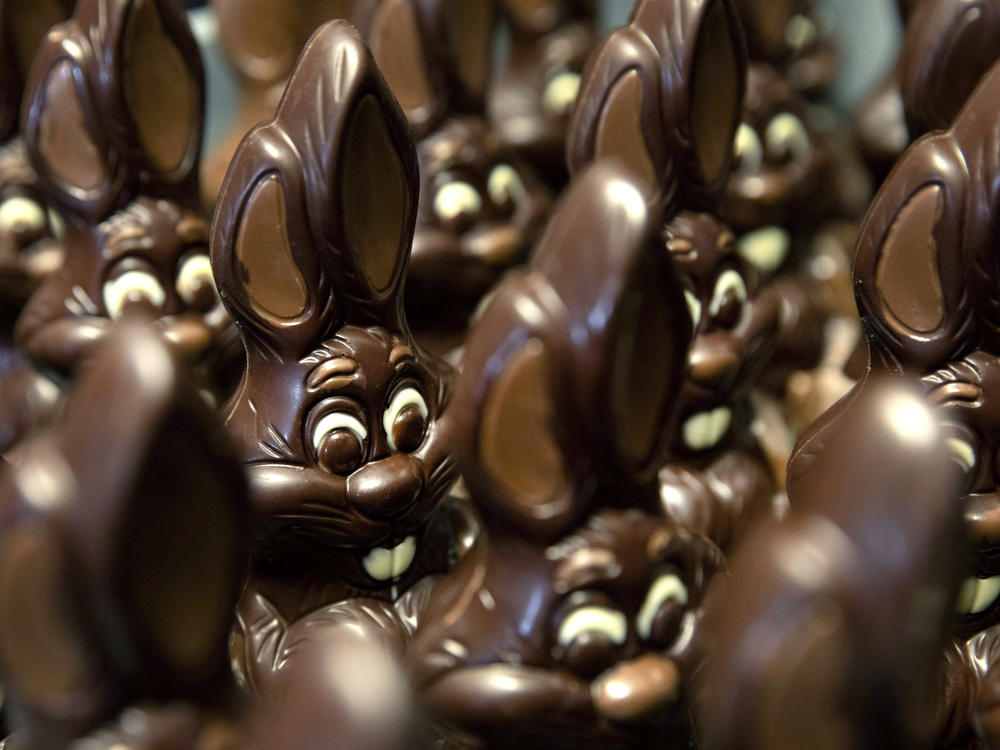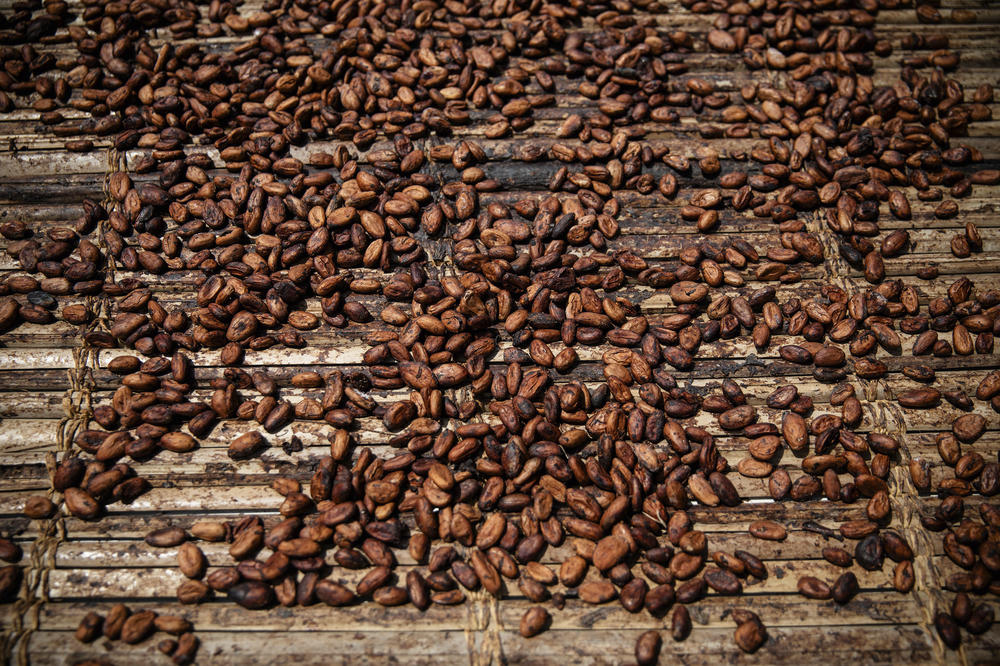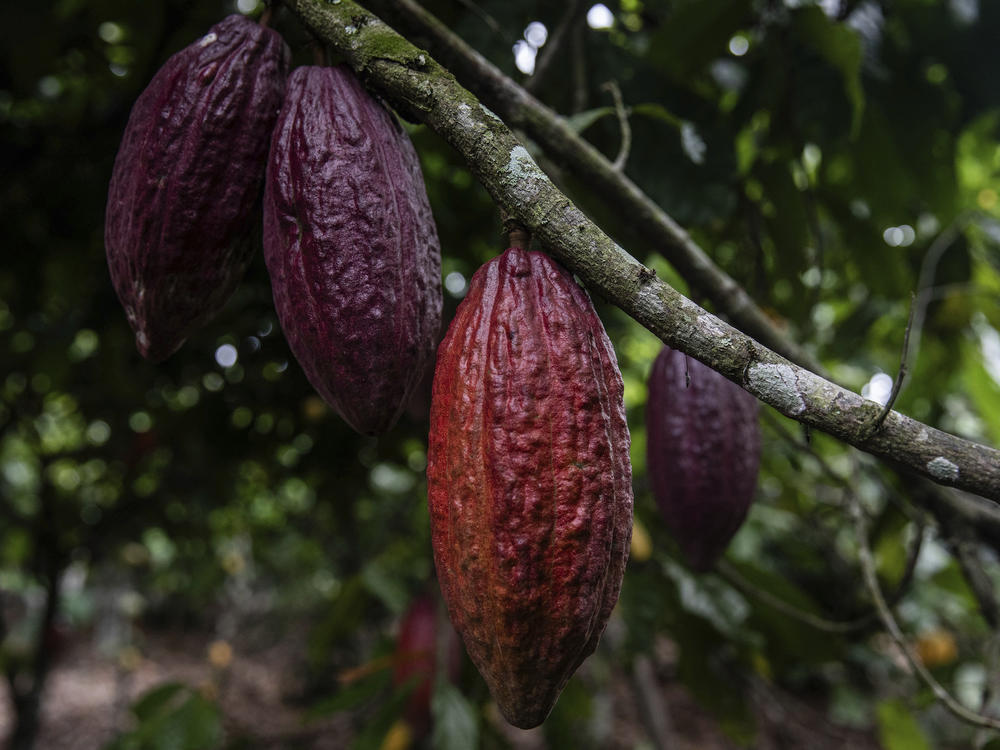Section Branding
Header Content
Pricier Easter bunnies and eggs. Half-dipped Kit Kats. What's up with chocolate?
Primary Content
Cocoa prices are going nuts: The bean is now more valuable than several precious metals and has surged faster than even bitcoin.
After cocoa passed the all-time record it hit in 1977 of $5,400 per metric ton, right before Valentine's Day – melting not just hearts but also wallets – one of the cocoa prices this week topped a whopping $10,000 per metric ton. Just in time for chocolate Easter bunnies.
To sum it up, cocoa prices have more than doubled in the first three months of the year and more than tripled in the past 12 months.
Why is this happening?
It all boils down to a dramatic drop in supply. The world is facing the biggest deficit of cocoa in decades. Most cocoa beans are grown in West Africa, where extreme weather and changing climate patterns have upended crop harvests, which are forecast to fall short for the third year in a row.
That means another year of higher prices for makers, sellers and, ultimately, eaters of chocolate. Chocolate bunnies and eggs are expected to be pricier this Easter and perhaps for some time to come. Shoppers are still expected to splurge on the holiday, but can anticipate to get less for what they pay for.
Wrong conditions at a wrong time of the year
Roughly two-thirds of the world's cocoa is grown in West Africa, most of it in Ivory Coast and Ghana.
And farmers there have faced extreme weather brought by changing climate patterns for a few years: heavy rains and flooding, high winds during the dry season — wrong conditions at the wrong time of year. This has worsened crop disease and also road conditions, disrupting bean deliveries to ports.
The International Cocoa Organization forecasts that global cocoa supply will decline by almost 11% this season. Other cocoa-growing countries have been unable to fill the gap because ramping up production is expensive and time-consuming; it takes years for newly planted trees to produce cocoa beans.
The extensive shortfall of cocoa has sent buyers scrambling, pushing prices up. And the historic rally has drawn in speculators, exacerbating the price volatility.
"Normally ... if prices are very high, people start producing more of that commodity," says John Ament, an independent consultant who's the former head of cocoa operations at Mars. "That is not as quick with cocoa. So I think these prices are going to stay higher than they were for a while."
Ament says the damaging weather compounded other preexisting problems. Trees in West Africa have been aging and yielding less cocoa; farmers in Ghana and Ivory Coast have struggled to battle pests and disease.
In fact, those farmers rarely benefit from the surging cost of cocoa in the market, because they typically pre-sell the beans at agreed-upon prices in advance.
"Unfortunately, the amounts they earn for selling their cocoa doesn't generate enough income to help them rehabilitate their farms — replant, buy fertilizers, buy pesticides, etc.," Ament says. "The sourcing of cocoa and the model for producing and trading cocoa in the world is not a sustainable model."
Smaller bars and Kit Kats only partially dipped in chocolate
There's a bit of a lag before chocolate makers and sellers pass down higher ingredient costs, but shoppers have already been paying more for chocolate for months — seemingly happy to do so, for a while.
Companies are getting creative to pass on or manage the higher costs. Mars has shrunk the size of some of its chocolate bars. Hershey launched a Kit Kat that's only partially dipped in chocolate. Other companies including Nestle, Hershey and Mondelez, owner of Cadbury and Milka, have gone the direct way, raising prices.
Easter-themed grab bags are leaning into non-chocolate candy: gummy, jelly, candy-coated or marshmallow.
The price of chocolates sold at major U.S. stores has jumped nearly 15% since the start of 2023, according to analytics firm DataWeave. For comparison, non-chocolate candy rose in cost just 4% in that time.
Some stores and brands — including Target, Lindt, Cadbury, M&M's and Reese's — offered notably bigger discounts this Easter compared to last year's, DataWeave found, presumably to help offset higher prices.
Industry research suggests people are starting to cut back on impulse purchases of chocolate, though they continue to splurge for special occasions. And companies say more price hikes are likely to come this year because it's unclear when cocoa harvests will be healthy again.
The National Confectioners Association forecasts that shoppers will spend more than $5 billion on chocolate and candy this Easter season. That's similar to last year, when shoppers spent more money to buy slightly less chocolate.
"This price increase will come on top of the price increases that already happened over the last couple of years, so it will be sort of adding insult to injury," Ament says, predicting that chocolate sales will continue declining.
"At the end of the day, chocolate is an indulgence product," he says. "You can swap it for other ways of treating yourself or for snacking."



